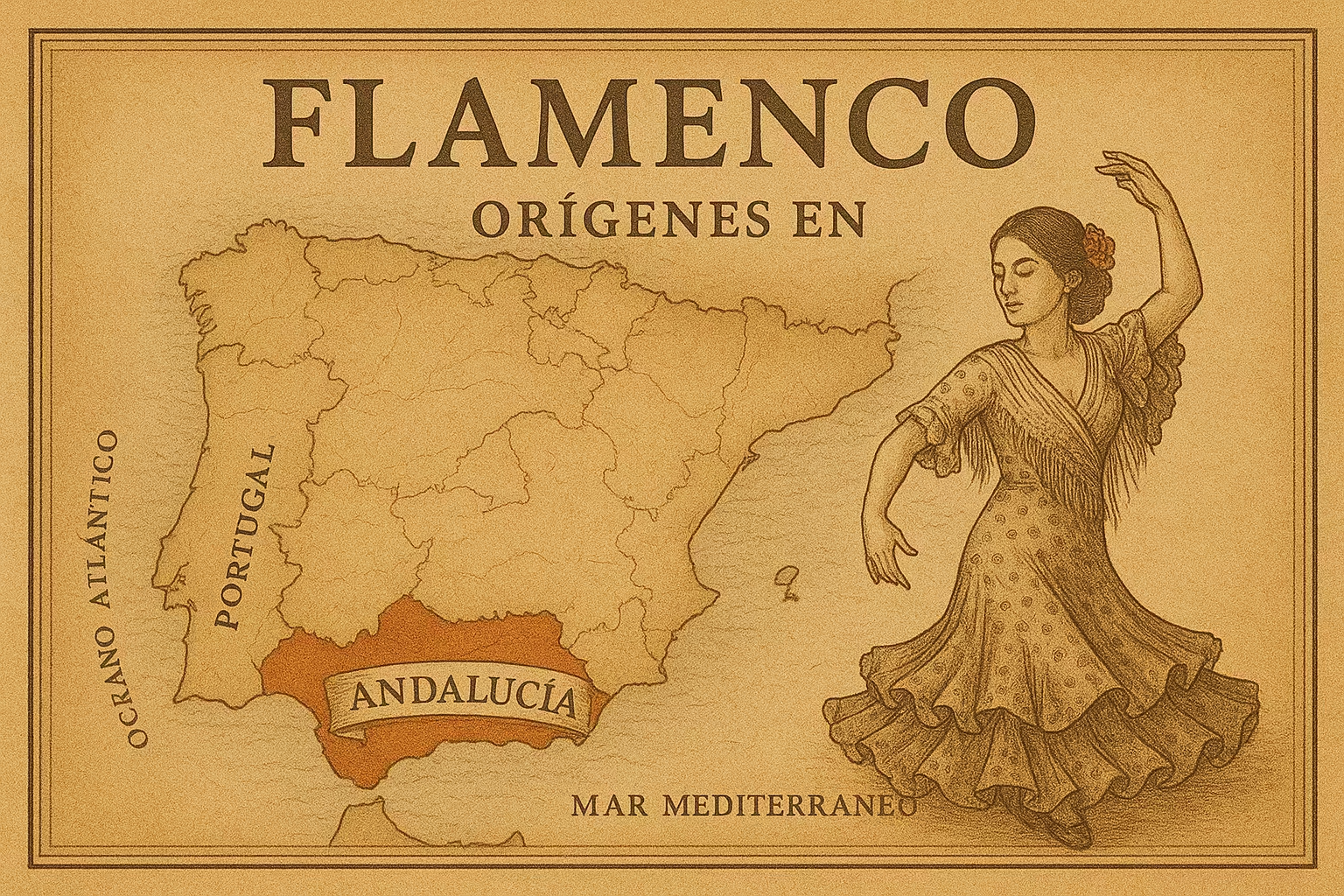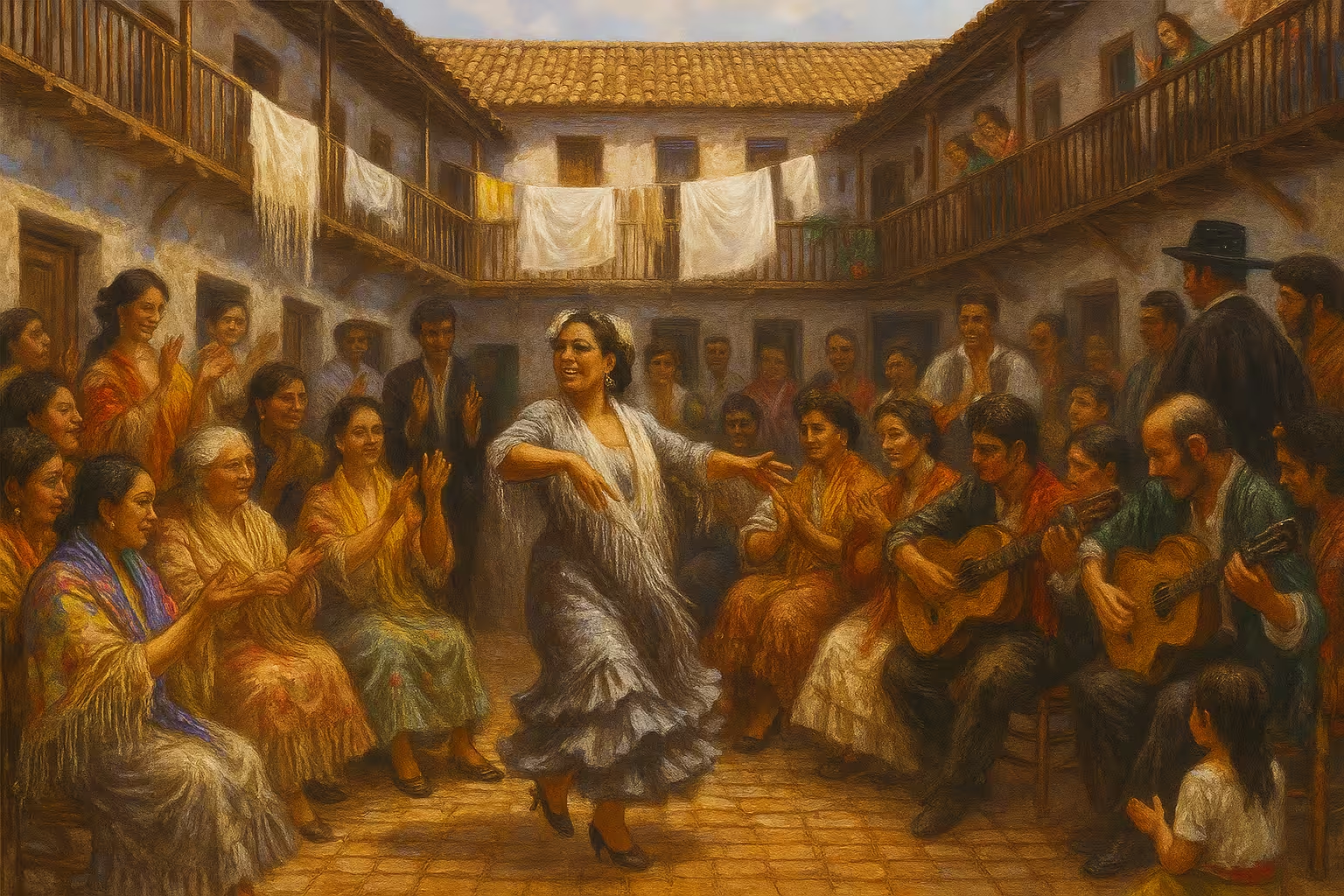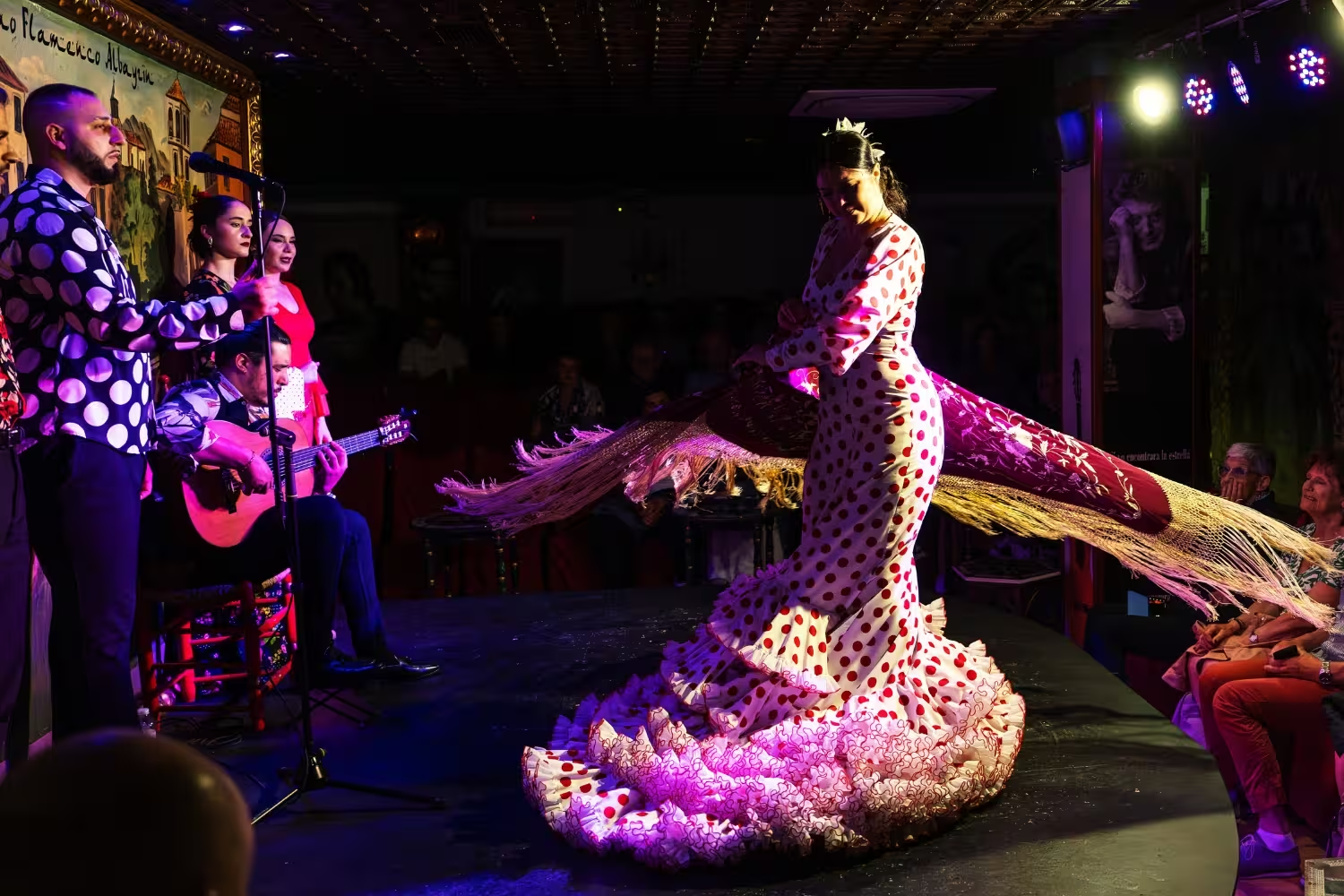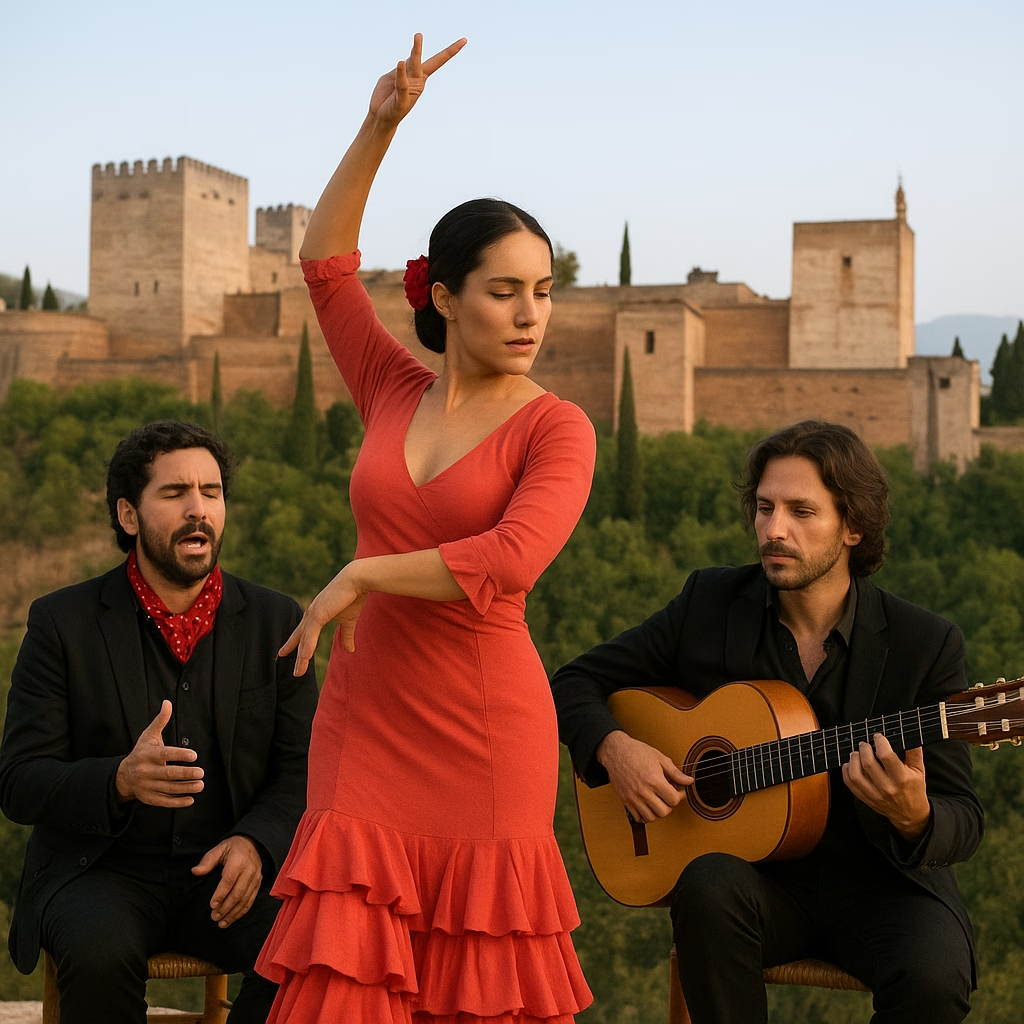Flamenco, a word that commands respect just by hearing it. It is a truly difficult art to describe, as its meaning is very broad.
We could define it as one of Spain’s great treasures, one of the most well-known artistic expressions worldwide. But, where is flamenco from? What is its origin? To answer these questions, we have to go to southern Spain, to Andalusia, the birthplace of flamenco par excellence.
It is in this land that the origin of flamenco is found, but if you want to know a little more, don’t miss this post where we delve a little deeper into its origins and history.
Flamenco, where is it from?
The origin of flamenco is found in Andalusia between the 18th and 19th centuries. It has a complex and mixed origin, as it was born thanks to the cultural mix between Christians, Moors, and Gypsies in Andalusia during this era.
Although its origin is mainly attributed to the Gypsy people, flamenco was nourished by Arab, Jewish, and African art. In particular, it is said that flamenco is the Gypsy version of the Arab or Moorish zambras.

The Arab zambras were a type of festive gathering held by the Moors in the 16th and 18th centuries, where music, dance, and song with Andalusian reminiscences were mixed. In these zambras, people already danced to the sound of palmas (handclaps), tapped their feet, and there were melismatic (ornamented) melodies. The Gypsies also began to incorporate this style into their celebrations.
Although its point of origin is Andalusia, with the passage of time flamenco spread to other regions of Spain such as Extremadura and Murcia, which also contributed variants and styles of their own.

Flamenco as Art
Basically, flamenco has 3 pillars under which it is sustained, which are:
-
El cante: the voice, deep and full of feeling.
-
El baile: strength, rhythm, and body expression that gives it that emotional touch.
-
El toque: the flamenco guitar, which accompanies and dialogues with the cante and the baile.
These three elements make flamenco a living and exciting art, which transmits the deepest feelings, even those that words cannot.
Recognized as a World Heritage Site
Flamenco has crossed borders and in 2010 it was recognized by UNESCO as an Intangible Cultural Heritage of Humanity.
And flamenco has an incomparable artistic value, it is a symbol of cultural identity of our country and we must be very proud of them.
This recognition also means that this art is better protected and kept alive, as it provides dissemination and support to ensure that its traditions remain alive and are transmitted to new generations.

Flamenco around the World
Flamenco is an art appreciated by people all over the world. Currently we can find pure flamenco shows in flamenco tablaos in Seville, Granada, Córdoba or Madrid, where artists maintain the pure essence of this art.
But in addition, there are also many countries such as Japan, the United States or France that have great flamenco schools and thousands of passionate followers. In fact, Japan is considered the second country with the most flamenco fans after Spain.
Currently
At present, flamenco is still very much alive and therefore continues to evolve. Along with the more traditional flamenco, we also find flamenco in fusions with other genres such as jazz, rock or Latin music, which makes it open to new audiences without losing its essence.
Various artists such as Camarón de la Isla, Paco de Lucía or, more recently, Rosalía, have taken flamenco to international stages, demonstrating that it is a universal art.
So, where is flamenco from? Flamenco is from Andalusia, Spain, although its strength and emotion have conquered the entire world. Its mix of cultures, its history and its ability to transmit feelings make it an unrepeatable art, declared a World Heritage Site by UNESCO.
To experience flamenco in an Andalusian tablao is to experience the purest essence of this tradition, where cante, baile, and guitar come together to create a show full of magic and authenticity.

